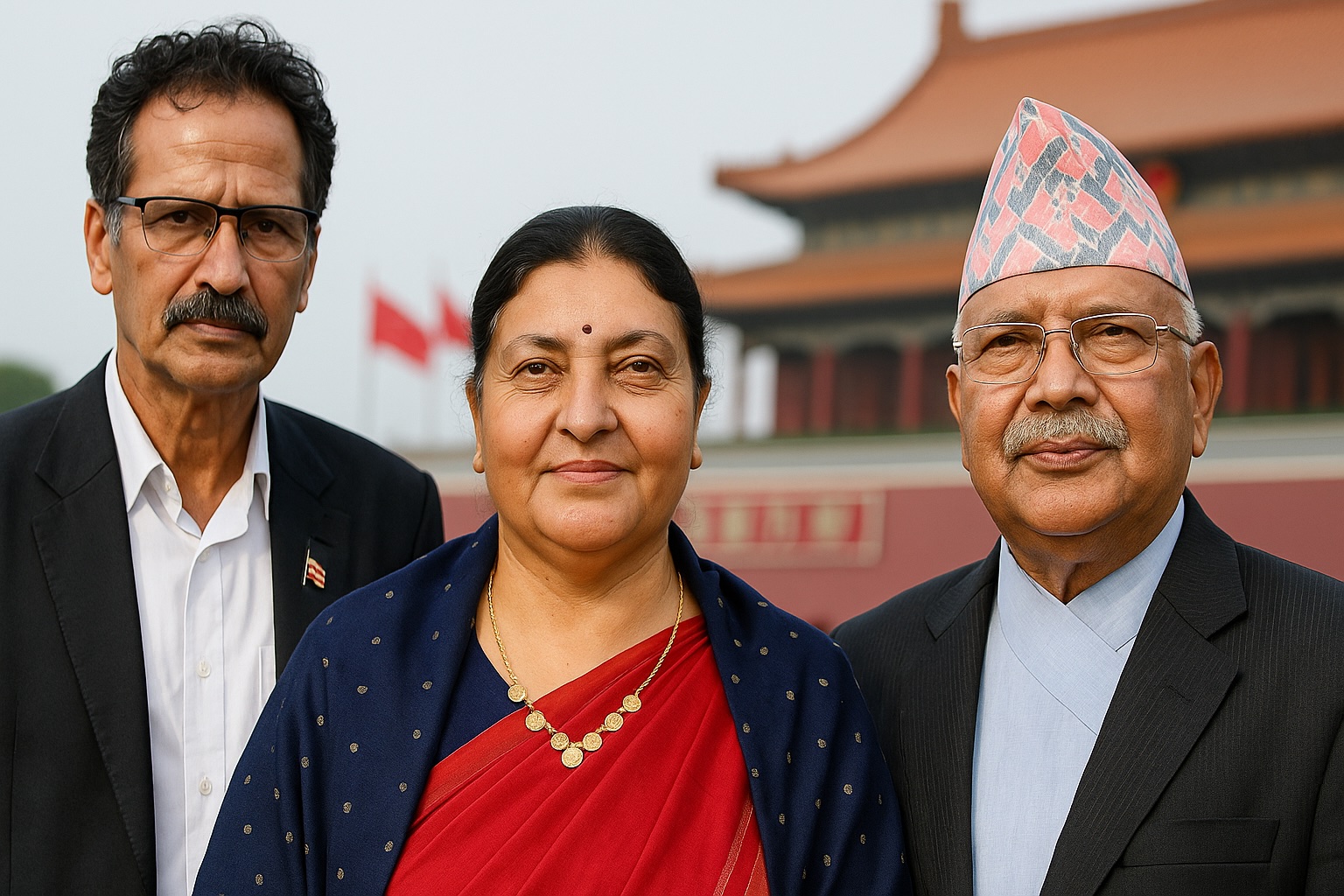After Bhandari’s China Visit, a Shockwave Hits Nepal’s Communist Opposition: Madhav and Agni in the Crossfire

Kathmandu — Recent legal actions against Nepal’s prominent opposition communist leaders have sparked serious debate within political circles. Just days after former President Bidya Devi Bhandari returned from her high-level visit to China, two major legal proceedings were initiated—one against former Prime Minister Madhav Kumar Nepal, and another against former Speaker Agni Sapkota. This sequence of events has raised questions: is this mere coincidence, or does it signal a deeper shift in Nepal’s power dynamics?
Bhandari’s Visit to China
Former President Bhandari visited Beijing in mid-Jestha (May/June) at the invitation of the Chinese government. During her stay, she not only held discussions with top Chinese officials but also remarked on the need to deepen strategic cooperation between Nepal and China. Many observers interpreted her trip as part of China’s continued shadow diplomacy in South Asia.
During her presidential term, Bhandari was known for her proactive role in strengthening China's influence in Nepal. Chinese media reports from her recent visit also emphasized Beijing’s renewed interest in ensuring “political stability in Nepal.”
A Wave of Legal Actions Follows
Only days after Bhandari returned home, the Commission for the Investigation of Abuse of Authority (CIAA) filed a corruption case against Madhav Kumar Nepal and 93 others in connection to the controversial Patanjali land deal. The very next day, the Supreme Court issued an order to reopen investigations into a wartime abduction and murder case involving Agni Sapkota, Vice Chair of the Maoist Centre.
These back-to-back events delivered a single, powerful message: Nepal’s opposition communist leaders are under legal siege. This has led to speculation about possible coordination between state institutions and powerful interest groups close to the government.
China’s Stake and Nepal’s Communist Landscape
Nepal’s major communist parties, particularly CPN-UML and the Maoist Centre, have long shared ideological and political ties with Beijing. In recent years, China has publicly aligned itself with Nepal’s “stability-first development model.”
Bhandari’s recent trip is seen by some as part of this continuity. However, the fact that two top communist leaders—both viewed as moderate, negotiation-driven, and China-friendly—were targeted immediately afterward raises strategic questions.
Political Messaging and Balance of Power
From China’s perspective, the presence of a strong opposition in Nepal is essential for democratic balance. Madhav Nepal and Agni Sapkota have both been recognized as rational voices within their parties. Targeting them through legal channels could deepen internal polarization within the opposition, potentially undermining the very stability China wishes to see.
Opposition leaders have begun framing these cases as acts of “political revenge,” rather than independent legal processes. Meanwhile, the ruling coalition has largely remained silent, citing judicial independence.
A Shift Worth Watching
This series of events reveals two key truths about Nepal’s current political landscape: first, the game of power is no longer confined to parliament or the streets—it is now also fought in courtrooms and institutional corridors. Second, the interests of regional powers like China are increasingly entwined with Nepal’s internal power equations.
Bhandari’s China visit, the legal actions that followed, and the reaction within the opposition camp cannot be viewed in isolation. Their combined impact will be felt not just in party dynamics, but also in the future of Nepal’s diplomatic alignment and domestic political stability.




![From Kathmandu to the World: How Excel Students Are Winning Big [Admission Open]](https://nepalaaja.com/img/70194/medium/excel-college-info-eng-nep-2342.jpg)
